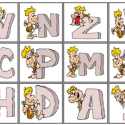Around 150 BC, Rome conquered Greece and began adopting many aspects of Greek culture, including their passion for writing. Soon the publishing business flourished, numerous libraries were founded and the empire began to enjoy a higher literacy rate.
Eventually the Roman Empire floundered, giving rise to the modern European nations, and the Roman alphabet was adopted to write other languages—even ones that were not related to Latin. As Amalia Gnanadesikan points out in The Writing Revolution, this initial spread of the Latin alphabet was due to the power of the Church. After the invention of the printing press, the alphabet continued to spread, fueled by colonialism and settlement around the world, and the typewriter. And it was cyclical: As more things were written in the Latin alphabet, the more useful it became.
Because the Latin script is used to write so many languages, it was inevitable that some of these languages would have sounds that Latin didn’t have. There was a need to invent new letters, and the most popular method for doing so has been to add diacritics—markings that sat above or below the letter, such as in ñ, é and ą.
Languages have become known for the changes they introduced to the Latin script. That is, certain letters have become associated with nations and languages. The letter ñ makes us think of Spanish, the letter ü makes us think of German, the letter ê makes us think of French and the digraph tx makes us think of Basque.
But we can take this a step further: The Basque ideology is often associated with nationalism and independence, and in this way the grapheme tx, which evokes thoughts of Basque, also evokes thoughts of nationalism and independence. As testament to this, Spanish youths often use tx instead of ch in Spanish texts to assert their independence.
The result is interesting. Though countless languages use the same Latin script, you can identify the language something is written in with relative ease because of the unique ways each language customizes the script.
 Follow
Follow

